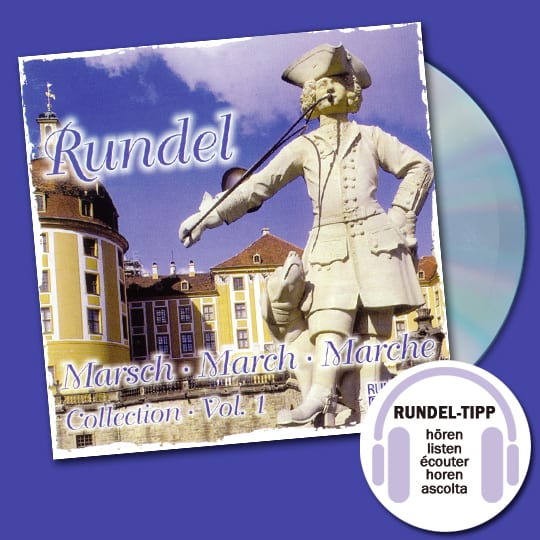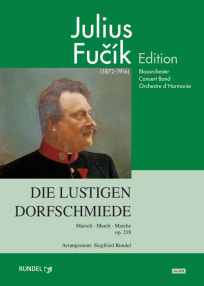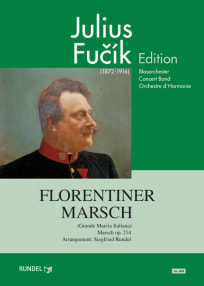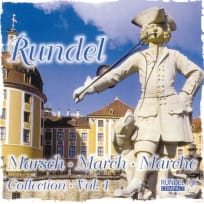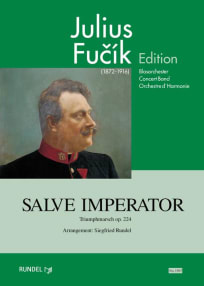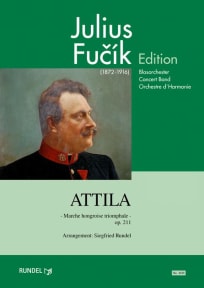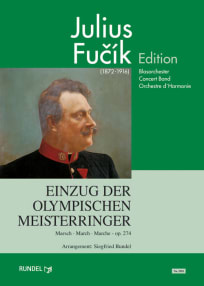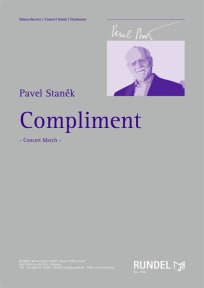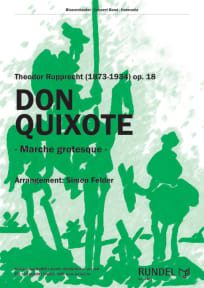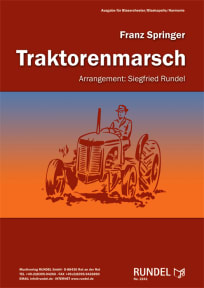Orchestre d'Harmonie
Das Siegesschwert
The Sword of Victory - L'Épée de la Victoire
March - Marsch - Marche op. 260

Orchestre d'Harmonie
The Sword of Victory - L'Épée de la Victoire
March - Marsch - Marche op. 260
Info
World-renowned march composer Julius Fučík was born in Prague in 1872. An authentic and versatile Bohemian musician, Fučík attended the conservatory in his hometown for violin and bassoon. In 1891 he studied composition with Antonín Dvořák. Fuèík played bassoon in several symphony and theatre orchestras. As common of that time, he had to prove himself in a military band. Fučík played in the Lower Austrian Infantry Regiment 84 under the direction of Josef Franz Wagner (composer of “Under the Double Eagle”) in Krems and later with Karl Komzák in Vienna. Julius Fučík himself also conducted military bands, such as the Infantry Regiment 86, stationed in Sarajevo in 1897 when he took over the band; it was redeployed to Budapest in 1900. During those years, Fučík was also very active as a composer, writing one of his most famous marches „Entry of the Gladiators“. From 1910 to 1913 he conducted the band of Infantry Regiment 92 in Terezienstadt before moving to Berlin, where he founded both an orchestra and a publishing company (“Tempo-Verlag”). Three years later he died at the young age of 44.
The march “The Sword of Victory” by Julius Fučík (1872-1916) was created at the height of his musical career and was one of his last military marches. The composition is dedicated to Lothar Edler von Hortstein (1855-1944), General of the IR 92 in Theresienstadt.
The present new edition by Siegfried Rundel follows the original and has freed the march from later, dubious additions. So he arranged a "classic" from the heyday of the old Austrian march in a style-appropriate way and makes it accessible to the today's modern wind orchestras. Although less known to us so far, “The Sword of Victory” stands for Julius Fučík's special musical signature.
Mots clés
Regimentsmarsch / Regimentsmärsche
Bohême
Hongrie
K u K / impérial et royal
Marche
Marches Militaires
Marches traditionnelles
Musique de marche
NOUVELLEMENT révisé
Prague
RUNDEL Edition Julius Fucik
RUNDEL Marche Collection
RUNDEL YouTube Chaîne
Victorie
Écoutez et lisez sur la chaîne YouTube de Rundel
Das Siegesschwert
https://www.rundel.de/fr/
The Sword of Victory - L'Épée de la Victoire
March - Marsch - Marche op. 260
Difficulté France: 1re Division / Grade 3+
Difficulté Belgique: Eerste / Grade 3+
Compositeur: Fucik, Julius
Arrangeur: Rundel, Siegfried
Catégorie: Marche de concert, Marche
Durée: 00:02:19
Maison d'édition: Rundel
Format: A4
Info: Partition + Conducteur + Parties
Rundel Numéro d'édition: MVSR1610
Date de publication: 2020

